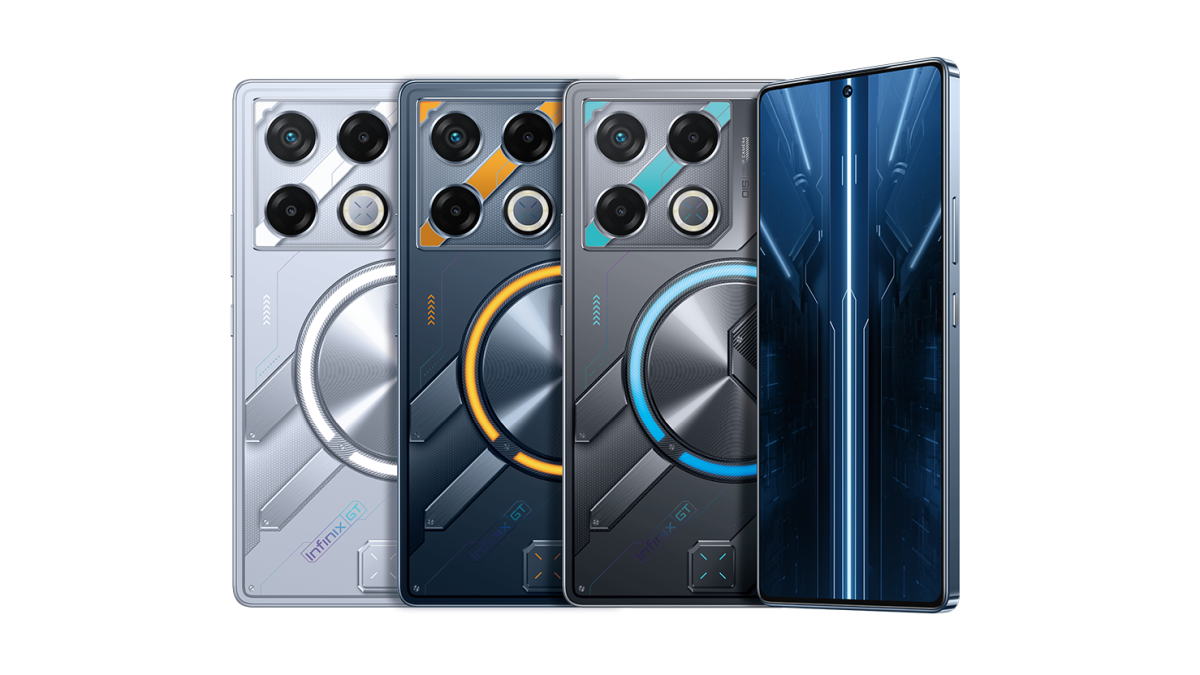Infinix has recently debuted its GT 20 Pro mid-range smartphone in the global market. This new model in Infinix’s gaming-focused GT line promises many improvements over its predecessor. But is it really that different from the GT 10 Pro? Keep reading to find out.


1. The display is slightly bigger and better
The new Infinix GT 20 Pro has a bigger 6.78-inch AMOLED screen, compared to the 6.67-inch AMOLED display. Both of these panels feature an FHD resolution, however, the newer model offers a refresh rate of 144Hz compared to 120Hz on the GT 10 Pro.
While the GT 10 Pro came with a screen-to-body ratio of 87%, the newer mode has a 91% ratio, meaning that it has thinner bezels compared to its predecessor. It is also worth mentioning that the GT 20 Pro has a peak brightness of 1300 nits, compared to the 900 nits on the GT 10 Pro. However, it’s important to note that these peak brightness levels are tailored for HDR content and aren’t achievable manually or even under direct sunlight. This means HDR videos will display with enhanced clarity and vibrancy on the GT 20 Pro.
2. A more powerful processor & faster RAM
Under the hood, the GT 20 Pro comes with a Dimensity 8200 Ultimate chipset, which is a significant improvement over the Dimensity 8050 on the GT 10 Pro. The Dimensity 8200 Ultimate is a more efficient processor as it is based on a 4nm node, while the Dimensity 8050 is 6nm. Beyond efficiency, the difference in performance is also quite significant with the GT 20 Pro scoring around 955,00 points on AnTuTu compared to around 734,000 points scored by the previous model.
In addition to that, the GT 20 Pro also features faster LPDDR5X RAM, while the GT 10 Pro model only uses LPDDR4X RAM. Both of these devices have UFS 3.1 storage, with the GT 20 Pro offering up to 12GB RAM and 256GB storage configuration.
3. A new dedicated display chip
Perhaps the most unique feature of the GT 20 Pro compared to its predecessor is the inclusion of a dedicated display chip called the Pixelworks X5 Turbo to improve gaming performance. It uses technologies like MEMC (Motion Estimation, Motion Compensation) and Game Optical Optimization to achieve 120FPS in games that aren’t usually capable of running at such high framerates.
4. Some improvements in the camera
While both smartphones feature the same camera hardware with a 108MP primary sensor, paired with two 2MP macro and depth sensors, the GT 20 Pro has some key improvements. Firstly, it comes with optical image stabilization technology, ensuring stable shots and smooth video recording by steadying the camera sensor.
Additionally, thanks to the Dimensity 8200 processor, the camera is now able to record videos with higher framerates. While the GT 10 Pro is limited to 30 FPS when recording in 4K, the GT 20 Pro can record 4K 60FPS footage. Additionally, the GT 20 Pro can record 1080p videos in 240FPS, while the GT 10 Pro is limited to 1080p 60FPS recording.
5. Longer software support
The GT 10 Pro debuted last year with Android 13-based XOS 13 onboard and the promise of 1 major OS update and 2 years of security updates by the brand. Infinix has slightly improved its policy with the GT 20 as it now promises 2 major OS updates and 3 years of security updates. Since the GT 20 Pro has debuted with Android 14-based XOS14, it will receive major updates up to Android 16.
RELATED:
- Infinix GT 20 Pro launched with 144Hz AMOLED display, Dimensity 8200, dedicated gaming chip
- Tecno Spark 20 Pro 5G with an iPhone 15 Pro look & large battery certified on FCC & TDRA
- Xiaomi 13 Ultra Premium Camera Phone is now only $799
- Get $100 OFF on Xiaomi 14 Pro at Giztop (1TB Variant)
- Lenovo Legion Y700 2024: Latest Gaming Tablet with Enhanced Display now available at Giztop
- WhatsApp Last Seen Not Updating? Here’s How to Fix It







